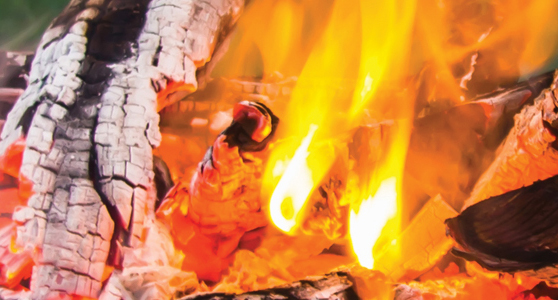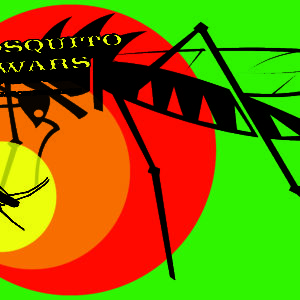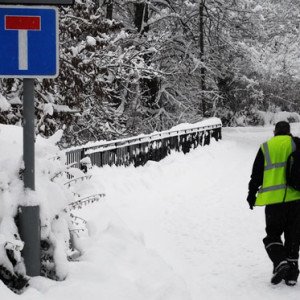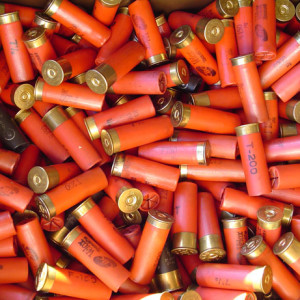
Fired Up for Camping
By: Kiernan Manion
The Basics of an Enjoyable Camping Trip
It’s the time of year when the weather is fair and the time has come to break free from the daily routines of home living and explore the great outdoors. One tried-and-true experience for the individual and families alike is the classic camping trip.
Roughing it in the woodlands has been a staple of summer plans for decades. While most have at least some experience with hiking through the woods and pitching a tent (some more successful than others), it’s always a good idea to brush up on the basics.
This article serves as a reminder on how to stay safe and acquire the skills and knowledge needed to enjoy a great camping experience.
Gather Knowledge and Be Prepared
The firsts step in preparing for a camping trip is gathering information. Whether it’s private campgrounds, public land/parks/forests or some other campsite you’ve been visiting for years, get to know the lay of the land before you head out. There are also a number of state and national parks worth considering and investigating.
Stay in contact with friends, neighbors and family members, letting them know when you’ll be gone, where you’re going and offer a way to reach you if necessary. Keeping a line of communication is a vital safety precaution, and at the very least, keeps someone watching over the house while you’re gone camping.
Before embarking on your camping trip, one idea to prevent mishaps is performing a “dry run,” or a practice trip. Spend some time practicing on your own with setting up the tent, packing and unpacking gear, walking through local trails and taking the time to learn your inventory. Get to know each of the products and resources you’re bringing with you; keeping firm knowledge of where you’re packing items and how they’re used will make the entire trip less stressful and time-consuming, giving you more time to enjoy it.
What You Should Have: the Basic Camping Gear
Tents, Sleeping Bags, & Clothing: Consider what you’ll use the tent for. Families should have roomy, practical tents with good ventilation, whereas solo travelers should consider weight, size and durability. Sleeping bags are always a given, but if you want more comfort, cots, inflatable mattresses and other sleeping options can be considered.
It’s vastly important to keep the quality of your tent and its parts in mind. Zippers, flooring, tie downs, frame, fabric, stitches and seams, not to mention the price, are all important factors in planning how often or long you’ll be camping. Inspect these elements first when shopping for new equipment.
Bring along plenty of clothing, preparing for the weather with extra layers, underwear, socks, rain gear and boots. Having a hat for both sun and cold will prove useful, as well as a solid pair of hiking boots, of which the quality varies greatly. Shop wisely and don’t skimp if you’re planning on using them for a long time.
Food & Water: When bringing food, keeping things fresh and void of the elements (sun, rain, bugs, dirt and even animals) is smart thinking. Having a cooler/cooler box, lunch bag, or separate backpacks to house food, including sealable bags and containers with lids, will do this nicely. When bringing meats and fruits/veggies, realize that no matter what precautions you take, these types of foods will probably be inedible after only a few days. Avoid bringing foods that spoil quickly on longer trips. Afternoon picnics are one thing, a week-long camping trip is another.
Pre-plan meals and ration as necessary, especially if you’ll be hiking to your destination and aren’t planning on fishing or heading back anytime soon. Granola/cereal bars, pre-packed sandwiches, instant noodles, canned food (don’t forget the can opener), trail mix, dehydrated foods/meals ready-to-eat (MREs), rice/grains/oatmeal, crackers, pita bread/dip and of course s’mores are all good ideas when planning your meals in the woods. Consider length of trip, personal preferences and how many people are joining you. Just think carefully and plan ahead, adapting your own meal routine to a camping environment.
As for water, it’s crucial to bring enough to keep you hydrated. One rule of thumb is to have at least a gallon of clean, drinkable water per person in your group, per day, or at least access to it. Water filters are a great idea if near a water source, otherwise keep water contained and sealed to preserve freshness. Water bottles and canteens vary depending on size and practicality; whether you’re going to be backpacking or driving, bringing enough water can’t be stressed enough. Consider the weather forecast for higher temperatures and bring even more water to compensate for high, hot temperatures.
Tools and Equipment: Along with food, a cast iron frying pan, a large pot, cooking utensils and mess kits should suffice for cooking meals. Pack some dish detergent and dish towels and you are all set. Sticking to a simple campfire has been an adequate way to cook and heat food for centuries, however a camp stove is good for rainy weather.
As for tools and resources, carrying some form of radio and extra batteries is an excellent way to stay alert of weather reports, animal sightings or even listening to some music. Keeping a compass and/or some kind of area map on your person is important, even if you happen to be staying on land that you know very well. Also, depending on your interpretation of “roughing it,” you may want to consider a few rolls of extra toilet paper as well.
Another incredibly important element for any camper is the Survival/Utility Knife, or your essential all-around woodsman’s tool. There are plenty of costs, capabilities, uses and other things to consider in deciding on a practical, effective knife for yourself. For more information on searching for the ideal survival knife for you, check out our article on survival knives HERE.
Perhaps the most important item to bring is a basic first aid kit, which should include bandages, disinfectant, a suture kit, gauze, essential medication (depending on you and your group) and fresh, sterile water. What’s most important is that you train yourself to know how to use the first aid kit effectively. Make sure to review your kit, understanding the purpose and use of each item. Brushing up on basic first aid can be a very useful resource for anyone, especially while camping in the wilderness.
Other Safety Tips
Always find out specific camping rules and regulations for your area before you make your way to your campsite. Generally speaking, the more you know, the better you’ll be at handling most anything the outdoors can throw at you.
Using common sense is crucial in facing the elements. Most skilled campers, hikers and travelers know this all too well, but we’ve all heard of a story where someone slipped up and made a very preventable mistake. Remember, we’re all human. Staying focused, being aware of your surroundings and the potential catastrophes that can occur is the most important tool for anyone, camping or not.
Starting and Maintaining a Safe Campfire
Even if you’ve been camping and building fires for years, it’s a good idea to review the basics of fire safety.
When establishing a good base for a campfire, remember to clear the area of debris, such as dead leaves and branches, build a foundation with rocks (if there isn’t already a fire pit or equivalent in place) and remove overhanging or dead branches. You’ll also need a bucket of water, shovel, or fire extinguisher to put out the fire when you’re done, as well as an added safety measure.
Gathering different types of wood is another early step in preparing for your campfire. You’ll need tinder (dry leaves, twigs, grass, bark, dryer lint), kindling (smaller sticks, branches and pieces of wood) and a fuel source (larger logs) to keep a good fire going. From there, being conscious of the wind and surrounding gear/other campers, you’re ready to start the fire.
Using the tinder you gathered, light the tinder with a flame source, such as matches, a lighter, or your preferred flint-lock or fire starting tool. Make sure to take every precaution in building a campfire, including educating your family and fellow group members on proper fire safety procedures and precautions.
We’ve all been exposed to the Smokey the Bear ad campaigns, educating children and adults alike on the critical importance of fire safety in the woods; they haven’t changed much to this day. We are still the only ones who can prevent forest fires and wildfires.
Never build a fire near your tent, clothing, or other items that could catch fire and make sure to sit/stand a safe distance away and stay conscious of where the wind is blowing the flames and embers. Another very important rule is to never leave a fire unattended or use flammable fluids, like gasoline or lighter fluid, to start a fire. Only build the fire as big as you need and always completely extinguish the fire when you’re done with water or dirt, making sure everything is cold and there are no more stray embers or flames.
Weather & Nature
The best way to ruin an otherwise enjoyable camping trip is to disregard the weather. Rain, heavy wind and the resulting damage and can devastate a campsite. Always do some preparation for dealing with the elements.
Before you begin to unpack and settle in any particular spot, make sure to stand at the specific place your tent will go. Look up and around the site, checking for dead trees, branches, or other potential hazards that can fall during a rain storm or heavy wind. Also avoid drainage paths and low ground/valleys, as well as obvious animal nesting grounds. Inspect your site carefully, even if you’ve used the same spot in the past. Nature is unpredictable.
If heavy rain is expected, or shows up as a surprise, have a backup plan in place. Use a sturdy, water-resistant tent and bring indoor entertainment to enjoy until the rain passes. If the weather becomes too severe, call it a day and leave. Just remember to always dry out equipment before packing it away to prevent mildew, rot and prolonged water damage.
Don’t feed wild animals, seek them out, approach, or leave food out in the open, and never harm any animals unless in drastic self-defense, due to specific hunting and nature preservation laws. If your campsite allows it, always keep dogs on leashes at all times. Use common sense, stay on paths and always remember that you are not the only one who camps (or lives) in the woods.
Closing thoughts
Your local Army Navy store is just a phone call or visit away and is an excellent resource for all your camping needs while also providing you with expert advice, clothing, equipment and quality products.
Be sure to check out some of the product reviews in this issue for an idea of how military surplus can aid you on your camping trip.
These products are designed and used by armed forces throughout the world, from tried and true U.S.-made products to unique and creative international items. The fact remains that many surplus items are made to last, withstanding harsh conditions and functioning properly without question.
Overall, before you go, make sure to devote plenty of time to brush up on some of these basics and plan your trip. Gather information on where you’re going, other campers in your group, campground specifics and reservations.
If you’re going camping this season, keep these tips in mind and seek out some of your own. Bottom line, check the weather, inspect your gear, make smart purchases and most importantly, stay safe and have a great time on your camping adventure.
Resources:
http://www.lovetheoutdoors.com/camping/tips/tips_and_advice.htm
http://www.rei.com/learn/expert-advice/camping.html



